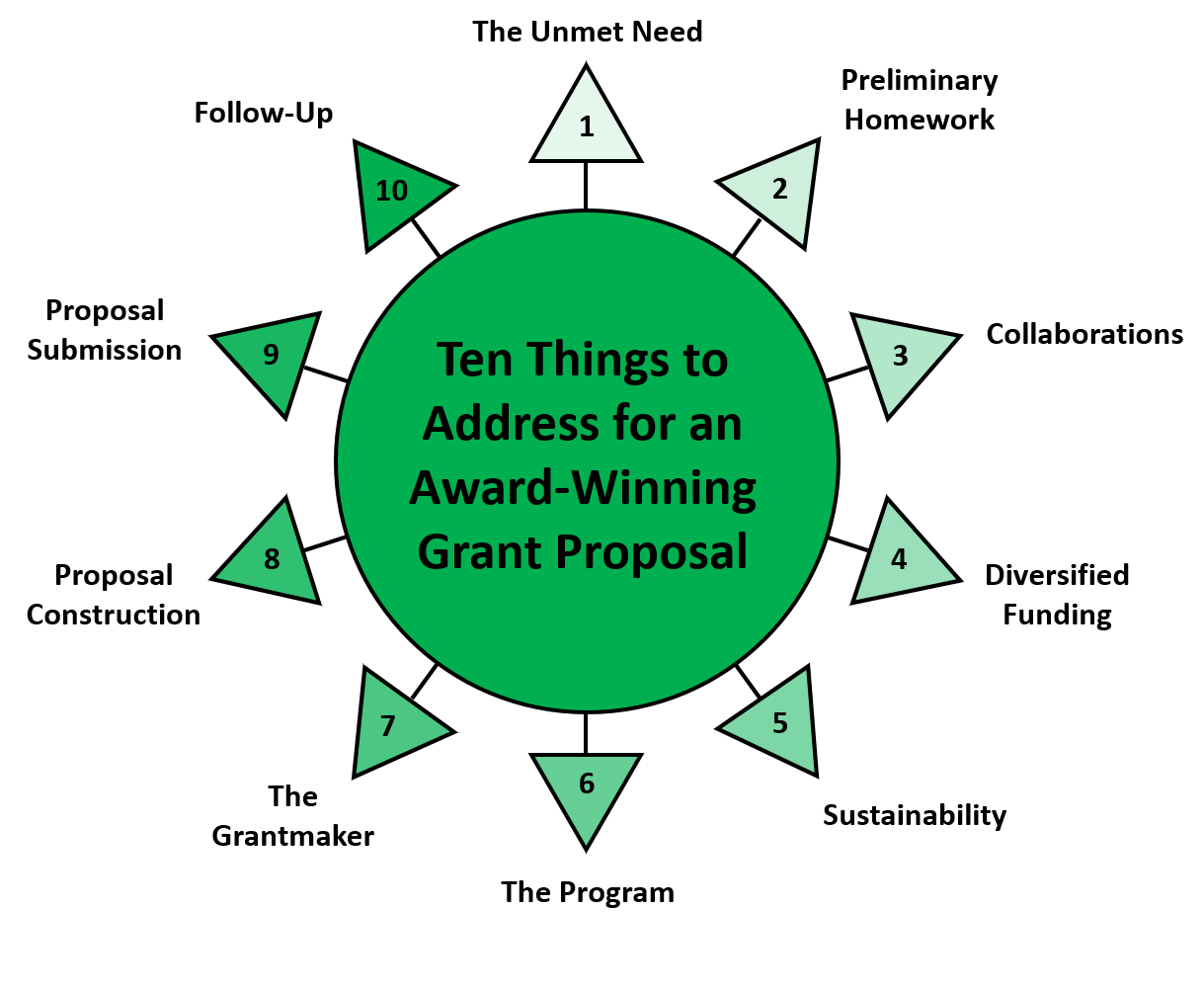Ten tips for a grant Application
Ten Things to Consider

Generally addressed in sequential order, ten things should be considered when producing a grant proposal. Fortifying each component will strengthen the likelihood of the success of the proposed program, which is actually the grantmaker’s primary objective. Neglecting to address any one step can be a reason for a funding rejection.
Your nonprofit organization would like to obtain funding to implement a program to serve members of the community. The need is unmet and people would benefit from your proposed program.
Although very simple and straightforward to compile, there are several sections of organizational information that must be collected and organized before continuing to other steps when developing a grant proposal; including but not limited to a description of the organization, a list of staff members, officers, and board members.
The more organizations participating in your proposed program, the more powerful the proposal. Think outside the box. Seek out and include other organizations that will contribute to your program, including likeminded community and other nonprofit organizations.
Foundations are increasingly interested in programs that have more than one source of funding, including in-kind contributions, such as volunteers, and funding from in-house business activities, organizational board members, and local businesses.
Grantmakers are increasingly reluctant to fund programs that are financially unsustainable after the awarded grant funding expires. Consequently, grant proposals and the associated programs will benefit from proposal sections that address the sustainability of the program. Forms of sustainability can include volunteers, organization staff, and entrepreneurial business activities that support the program into the future.
Naturally, a comprehensive description of designed program activities, and proposed outcomes and impact, will be at the core of the grant proposal, including members and participants, roles and responsibilities, and anticipated budgets.
Often misunderstood or incompetently considered, the nature and constitution of the grantmaker (the funding organization) is of primary importance when seeking grant funding. Thorough consideration and targeting of potential grantmakers is a key step in pursuing grant funding. Grantmakers are busy people and greatly appreciate when grant applicants analyze and qualify the fit between the proposed program and the funding organization.
Although only one of the key areas of focus, the composition of the grant proposal is of primary importance to a successfully awarded grant application. Along with clear descriptions of proposed program activities, outcomes, and impact, strict adherence to instructions and guidelines offered by the targeted grantmaker are of utmost importance. As I teach in my college technical writing course; the three most important things in technical writing: audience, audience, audience.
After all of this consideration and effort, the day comes when the beautifully crafted proposal is submitted. While this process is often anticlimactic, it is an important step that cannot be mistakenly executed.
Another important category in the development of a grant application that is often overlooked is Follow-up, which can take many different forms, including periodic program activity and budget reporting if the funding is approved; or an analysis of the submitted proposal and the determination of the reasons for rejection if the funding is denied.